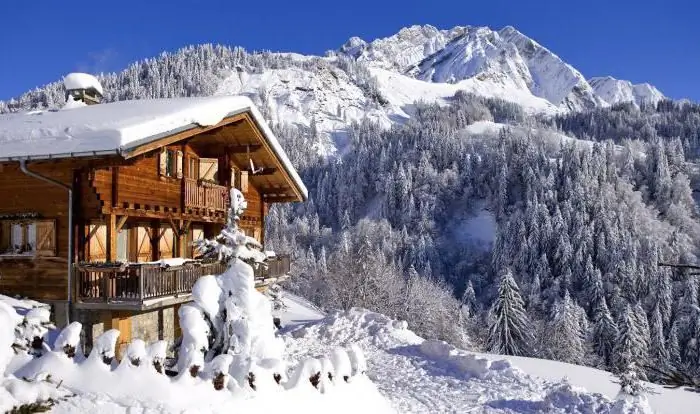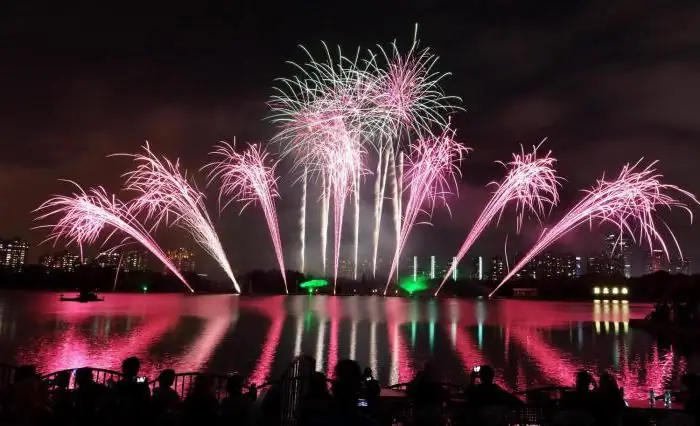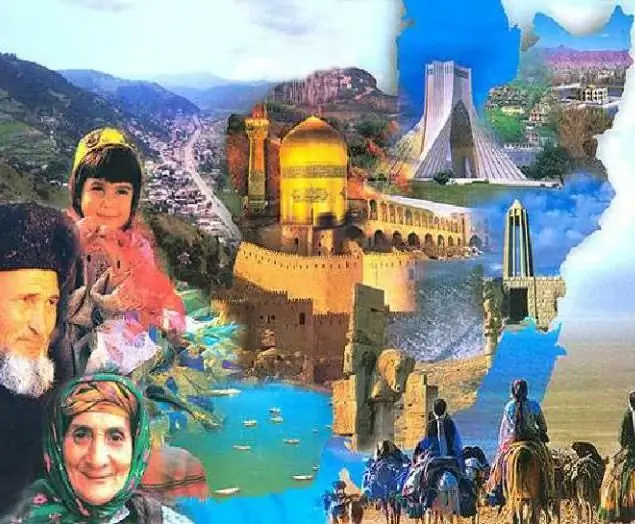- Author Harold Hamphrey [email protected].
- Public 2023-12-17 10:06.
- Last modified 2025-06-01 07:20.
Inbound tourism is travel organized for foreigners, serving foreign tourists.
"Colourful Russian estates or monotonous Siberia - foreign tourists know little about Russia," travel industry professionals regret. This, of course, is no longer about the delusion of foreign inhabitants from the category: in the Russian Federation, bears walk the streets, and Russians feed them from their hands. This is already a rudiment of ideas about Russia, however, as is the opinion that nothing has changed in the country in the field of tourism services in fifteen years. Inbound tourism in the Russian Federation should radically change these judgments, subject to a competent approach to the development of new routes.
Concept
Synonymous with the concept of "incoming tourism" is the English word "incoming". This system has its own tools for promoting tourism products, but not as developed as in the internal aspect. The inbound tourism market includes businessdirections or educational excursions.

Dynamics of tourist flows
The number of tourists in Russia grew at a good pace until 2014. Then there was a decline associated with a decrease in the business tourist flow due to the aggravation of foreign policy relations. But in 2015, the influx of travelers recovered slightly. Rosstat cites the following growth dynamics of foreign visitors who indicated "tourism" as the purpose of their visit to Russia:
- 2011 - 2,335,977 people;
- 2012 - 2,570,469 people;
- 2013 - 2,664,782 people;
- 2014 - 2,583,079 people;
- 2015 - about 3 million foreigners.
Almost three years ago, Rosstat began to count foreigners in Russia according to a modified scheme, that is, it switched to the accounting system developed by the World Tourism Organization, used by all countries. A tourist is one who comes to Russia to spend money. According to this system, already in 2015 one could speak of almost three million foreigners. Positive dynamics was also noted in 2016.
What is holding back the flow of tourists to Russia
Experts in the tourism industry say that foreign tourists have not become fewer, they just spend less and are more selective in their choice of services. Experts name the factors hindering the development of inbound tourism in Russia:
- underdevelopment of international air traffic;
- visa restrictions;
- security issues;
- high package price;
- low levelservice;
- poor infrastructure;
- foreign political tensions;
- not enough information about holidays in Russia.

Positive factors
The situation with inbound tourism is still changing. Today, this type of travel is considered a trend, and travel industry professionals are promoting Russia's tourism opportunities in the world. For the state, the advantages of inbound tourism are obvious, bringing direct investment, as well as jobs in the subjects of the federation. In addition, a steady flow of tourists stimulates the development of the tourism market infrastructure.
The favorable situation with inbound tourism is associated with:
- the introduction of a simplified visa regime;
- appearance of the tourist police;
- development of infrastructures not only in the capital, but also in the regions;
- creation of national tourist centers NTO Visit Russia in various countries of the world to present image information about Russia.
Demanded routes
The Soviet travel company "Intourist" in the eighties, taking into account the peculiarities of inbound tourism, developed a hundred routes that are of interest to foreign tourists.
- Moscow-St. Petersburg.
- Moscow is the Golden Ring of Russia.
- Trans-Siberian Express.
- Tea Road.
- The Great Volga Route.
- River cruises.
In the organization of inbound tourism today, tour operators need to revive these destinations, but so far only promoted tourist destinations are in demand.products. The tourist opportunities of the regions are presented rather sparingly, only two percent.

Inbound tourism strategy
Moscow and St. Petersburg can no longer remain the only centers of attraction for foreigners, also due to insufficient infrastructure: there are often not enough buses or tickets to museums. Travel market professionals offer:
- Develop a new tourism destination formation mechanism. For example, Moscow or St. Petersburg as large recognizable cities and starting points of the route; further - moving to other regions.
- Create new branded routes that unite regions. For example, the Silver Necklace of Russia. This direction includes eleven subjects with ethnographic, cultural and historical points.
- Create a single full-fledged portal of tourism in Russia, uniting all offers for foreign visitors.
Tourism is brand driven
The modern tourism market offers not only organized tours, but also individual solutions depending on the purpose of travel. The more flexible the offers, the more interesting they are for the tourist. Tourist flows are different, and the subtleties of tourism should not be missed. The Russian Federation can take advantage of the demand by creating brands from cultural or natural centers, filling their images with tourism products. For tourists, the borders of the subjects of the federation are not important, they come for the sake of the object.
In addition to the capital regions, Baikal, Siberia or Kamchatka may open for foreigners;noble estates, fishing ponds or nature reserves. The tourism industry believes that today there are favorable conditions for promoting Russia abroad.

Where do tourists go to Russia from
Russia is one of the ten most visited countries in the world, but it lags far behind France, the USA, Spain and Turkey. In terms of the number of tourists coming to Russia, China is the leader.
Foreign tourists in Russia:
- EU - thirty-seven percent;
- Asia - thirty-three percent (China - twenty-three percent);
- Southeast Asia and Australia two percent;
- CIS - five percent;
- Middle East - twelve percent;
- USA - Eleven percent.
The interest of the citizens of Iran and India is growing in Russia. The strategic interests of the Russian Federation in the segment of inbound tourism are directed to Iran, India and Vietnam.
Income from foreign tourists
The World Tourism Organization annually publishes data on countries' income from inbound tourism. From them it follows that Russia is ahead of the smaller countries. And some are much more difficult to get to than in Russia:
- USA - two hundred and four billion dollars;
- Germany - almost thirty-seven billion dollars;
- France - almost forty-six billion dollars;
- Spain - $56.5 billion;
- Russia - eight and a half billion dollars;
- China - one hundred and fourteen billion dollars;
- South Africa -just over eight billion dollars;
- New Zealand - almost nine billion dollars.
Russian tourists spend four times more than foreigners in Russia. Competition with countries that have long realized the benefits of inbound tourism makes it necessary to increase funds in this segment.

Regional markets for foreign tourists
Offering the development of inbound tourism outside the capital regions, tourism experts note the inability of the entities to offer quality services to foreign tourists. This applies not only to the development of the route, but also to elementary trifles. Regional tourism should be complemented by staff - especially guides who know at least English.
Today, in regions that are attractive to tourists, it is rare to find bilingual menus or hotel brochures for foreigners.
Which regions have more foreign tourists
The share of foreigners in the hotels of the Russian Federation is more than eleven percent, that is, about six million people. However, the distribution of tourists across cities is uneven. More than half live in Moscow - thirty-five percent of the total number of guests, just over two million people. The share of foreigners in St. Petersburg is thirty-three percent of the total number of guests, more than a million people. Curiously, the number of foreign tourists is not always proportional to the domestic tourist flow.
Regions of interest to foreigners
If we compare the indicators of domestic and inbound tourism, thenthe results will be:
- Primorsky Krai: Russians - 813,511, foreigners - 145,483;
- Irkutsk region: Russians - 848572, foreigners - 124,901;
- Sverdlovsk region: Russians - 1,079,998, foreigners - 79,997;
- Tatarstan: Russians - 1,680,475, foreigners - 101,980;
- Vladimir region: Russians - 535, foreigners - 88,845;
- Yaroslavl region: Russians - 633,984, foreigners - 48,845.

Tools to attract tourist flow
The increase in tourist flows is influenced by: a developed hotel base, modern airports and active promotion of tourist offers at the international level, including during major world events.
In 2018, such an event will be the World Cup, hosted by Russia. And already in the stages of preparation for it, the promotion of the country for tourism begins.
Games will be held at twelve stadiums in eleven cities of the Russian Federation. According to experts, the FIFA World Cup can attract up to 1.5 million foreigners, including due to visa-free entry with a fan passport and the FIFA list. Each tourist can spend an average of about a thousand dollars in Russia.
Specialists of the offices of tourist centers created in the world NTO Visit Russia conduct a series of presentations about the country, develop programs to inform foreigners about the tourism opportunities in Russia. The championship poses new challenges for the tourism business, this is a unique opportunity to tell about Russian cities andmake tourism advertising all over the country.
From the B altic to the Kuriles, from the Arctic to the Caucasus Mountains
Not only foreigners are ignorant about Russian tourism. Basically, Russians only know about iconic tourist routes, not realizing how many breathtaking places there are in Russia:
- Kungurskaya cave in the Perm region - 148 vertical through mines.
- Lotus Valley on the Volga.
- Stalin's bunker in Samara - 12 floors, with an elevator.
- Dancing forest with ecological trail.
- Kargopol is an ancient city decorated with 11 white stone churches.
- The sunken city of Mologa, 32 km from Rybinsk.
- Alaid Volcano on Atlasov Island.
- Wrangel Island is a nature reserve with about four dozen plants and animals found nowhere else.
- Kapova cave - about 200 drawings of primitive people.
- Champ Island with round stones.
- Whale Alley in Chukotka is an ancient Eskimo sanctuary.
- Pillars of weathering in Komi.
- Chara sands with dune ridges up to 25 meters high.
- Museum of the World Ocean in Kaliningrad.

Over the past three years, the domestic tourism market has changed significantly: tourism niches have formed, the main players in the tourism business have been identified, new tourism products are emerging in the regions. Domestic and inbound tourism can develop in the same direction, in a single infrastructure, but they should be aimed at different travelers - domestic andforeign. This does not apply to routes, experts say, but to the subtleties of tourism, such as language conditions and a simplified visa regime. Other factors in promoting Russian tourism products, such as ensuring safety and comfortable passenger transportation, are equally necessary for consumers of this range of services offered to travelers from different parts of the world.






